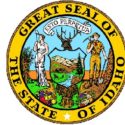Lewis and Clark arrived in Idaho in 1805. A Gold Rush in the 1860s brought settlers from the United States, and Idaho became a territory in 1863. Idaho’s population had grown to 32,610 by 1880 and Idaho became a state in 1890.
Idaho wanted statehood for several reasons. First, they wanted to be able to vote in presidential elections and to have voting representatives in Congress. Territories don’t have this voice in U.S. politics. That’s why Puerto Rico isn’t represented as states are. As more settlers came in from the states, their demand to have the power of a state made Idaho want to be a state.
People could also see that it would be financially beneficial for Idaho to become a state. They could expect to jump from $28,000 a year in federal funds to $3.5 million. They would also be able to work with foreign investors, which would help their mining industry. And, with pioneers traveling through Idaho on their way to California and Oregon, they knew that statehood would encourage more people to settle in Idaho.
Internal conflicts
Every territory that has become a state has had issues to deal with. Idaho was a diverse territory, with Hawaiian and Basque residents as well as Native Americans, European Americans, African Americans, and more. During the territorial period, however, a split between Mormon residents in the South and non-Mormon settlers in the North threatened Idaho’s chances of statehood. A representative from Congress put it this way:
But allow me to say, gentlemen, that the most serious obstacle to my mind in the way of your admission into the Union, is not the question of irrigation, it is not the question that concerns your material affairs in the territory, but the most serious obstacle lying in the pathway of your admission into the Union is the question of Mormonism… Now your constitution will be very carefully scanned upon that question.
At that time, Mormons allowed polygamy — one man could have more than one wife. This was illegal in the United States, and the issue delayed Utah’s statehood, too. The people in the North used public feeling against polygamy to pass a law saying that Mormons could not vote. This rule was included in the state constitution in 1889… since the Mormons were not allowed to vote.
With the mostly Democratic Mormons disenfranchised, Idaho became a Republican territory, and the Republican Congress of the time accepted Idaho as a state. The new Republican president, Benjamin Harrison, signed the bill and Idaho became a state.
The rule against Mormon voting, called the Idaho Test Oath, was repealed in 1892. All of the anti-Mormon language wasn’t cleaned out of the Idaho Constitution until 1982.
Lessons for Puerto Rico
Did the statehood supporters use anti-Mormon feelings to get a Republican majority, just so they could win over the Republican Congress? Some say they did. Or was it that Congress had anti-Mormon feelings and they used statehood as bait to get Idaho to discriminate against their Mormon residents?
Either way, the internal conflicts were resolved after statehood.
When internal conflicts delay statehood, they create hardships for everyone. Getting together to support statehood makes sense. Internal conflicts can wait.








No responses yet